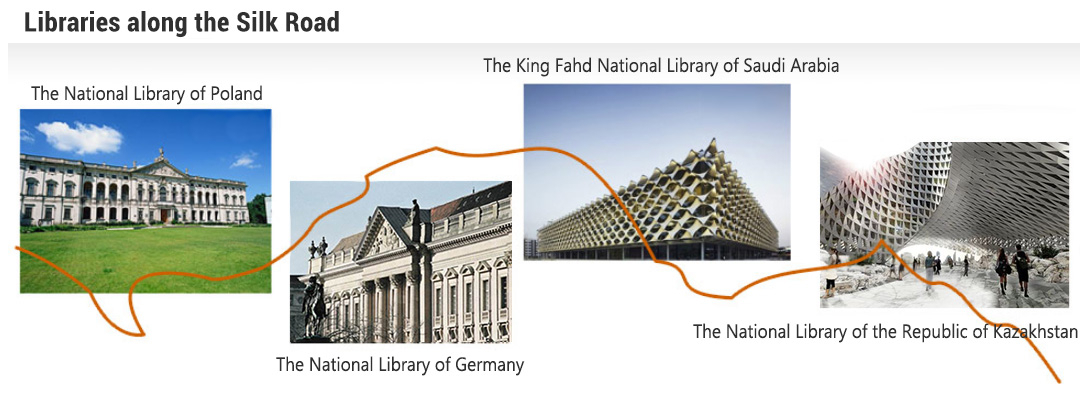This year marks the fifth anniversary of the Belt and Road Initiative (BRI) proposed. In the past five years, notable outcomes have been achieved in cultural communication, educational cooperation, and tourism exchange, said Ning Jizhe, head of the National Bureau of Statistics at a press conference held by the State Council Information Office in Beijing on Monday.
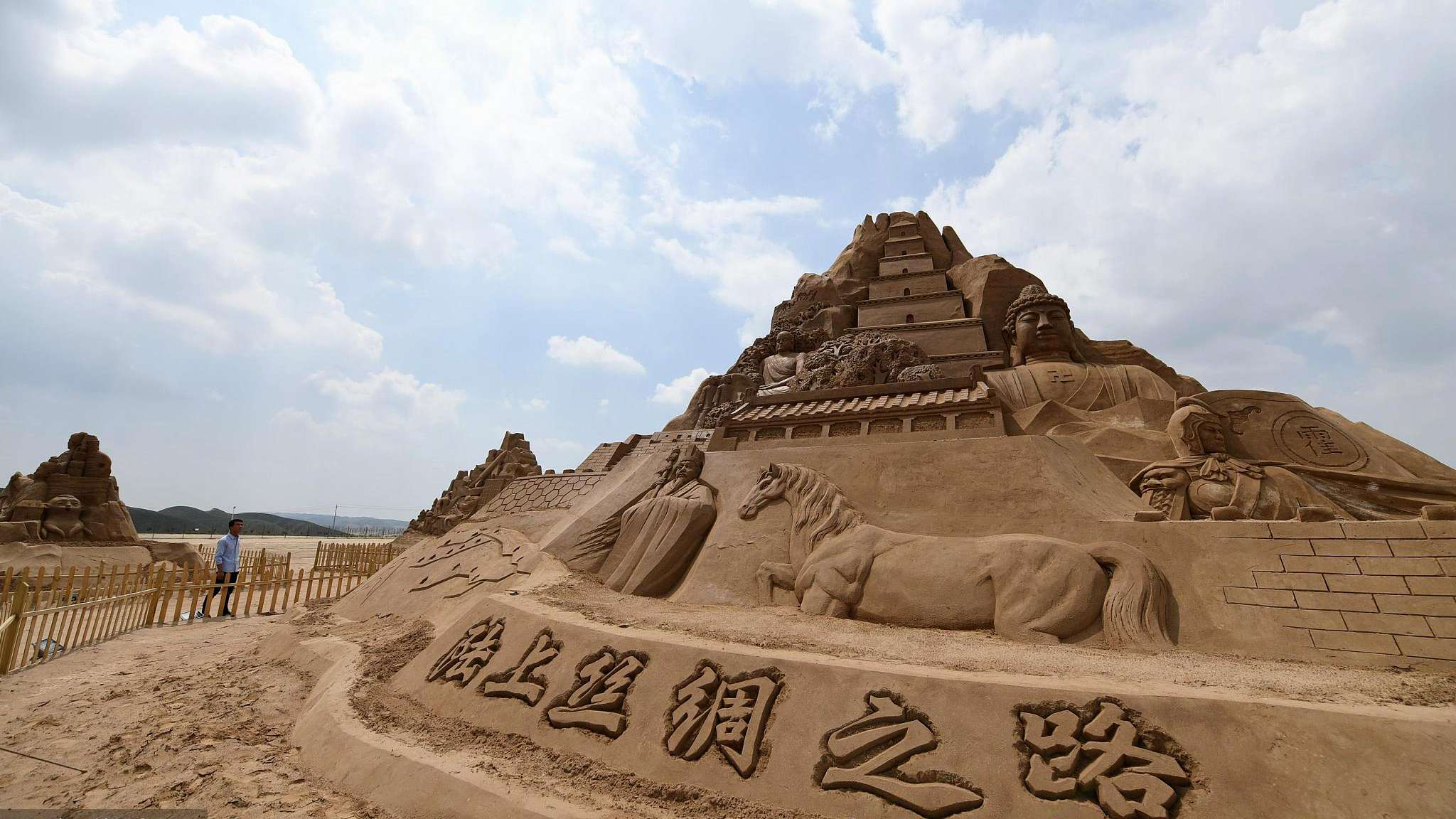
A sand sculpture themed "The Silk Road" is seen at the first Sand Sculpture Art Festival held in Lanzhou, capital city of northwest China's Gansu Province, August 14, 2018. /VCG Photo
A sand sculpture themed "The Silk Road" is seen at the first Sand Sculpture Art Festival held in Lanzhou, capital city of northwest China's Gansu Province, August 14, 2018. /VCG Photo
According to Ning, China and the Belt and Road countries have made progress in cooperation in such areas as culture, education, and technology. A number of detailed project plans have been drawn up in various directions including education, technology, finance, energy sources, agriculture as well as inspection and quarantine.
China has maintained close cultural communication with the countries along the Belt and Road in the spirit of openness and inclusiveness. For instance, this year's Shanghai International Film Festival saw
the Belt and Road Film Festival Alliance in Shanghai with a memorandum of cooperation issued by 31 film festival organizations from 29 countries that participate in the BRI.
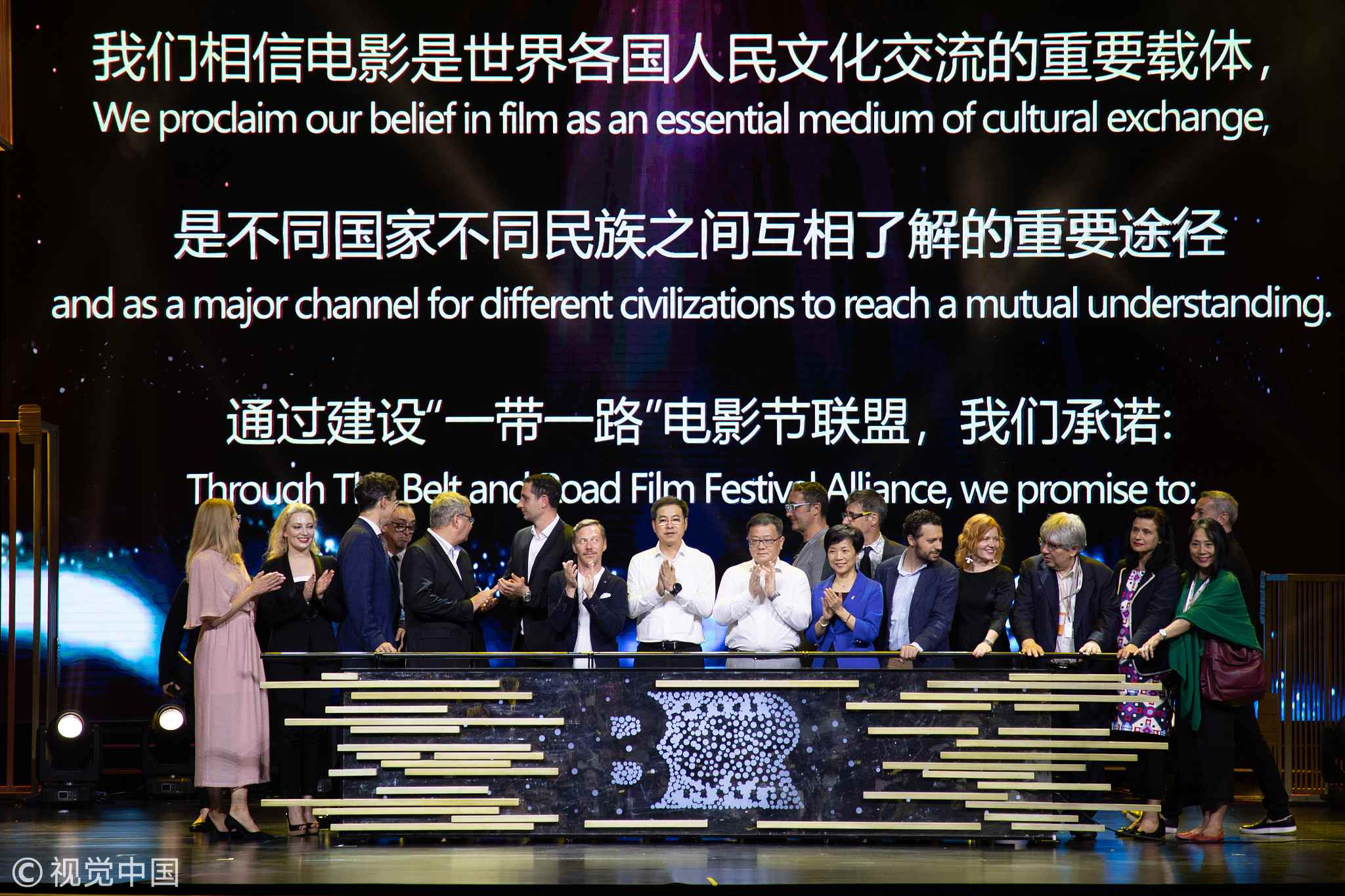
The Belt and Road Film Night ceremony is held in the Walt Disney Grand Theater in Pudong District of Shanghai, China, June 20. /VCG Photo
The Belt and Road Film Night ceremony is held in the Walt Disney Grand Theater in Pudong District of Shanghai, China, June 20. /VCG Photo
The published alliance manifesto claims that the organization plans to enhance information and film sharing, as well as exchanging filmmakers and industry experts, and to start more joint projects with the coalition.
In addition,
the first Belt and Road Week was held during the festival, with 154 films from 49 countries along the Belt and Road presented.

An after-ceremony party of the Belt and Road Film Night is held in Pudong District of Shanghai, June 20. /VCG Photo
An after-ceremony party of the Belt and Road Film Night is held in Pudong District of Shanghai, June 20. /VCG Photo
Aside from the cooperation on the film industry,
the Library Alliance along the Silk Road formed in May also serves as a significant basement for cultural communication.
Initiated by the National Library of China (NLC), the alliance has the first batch of 24 members from countries and regions such as Bangladesh, Belarus, Malaysia, Mongolia, Thailand, and Vietnam to cooperate on document sharing, classics protection, and digitalization.
In the past five years, China also saw an increase in the number of international students from countries covered by the BRI in the past five years. A total of 317,200 students from the Belt and Road countries studied in China in 2017, up 11.58 percent over 2016, accounting for 64.85 percent of the total international students in China.
Under the Initiative, China has set up 81 education institutions and projects as well as 35 cultural centers in countries along the Belt and Road. In the first half of 2018, China spent over 270 million yuan (around 39.3 million US dollars) on the Silk Road scholarships.
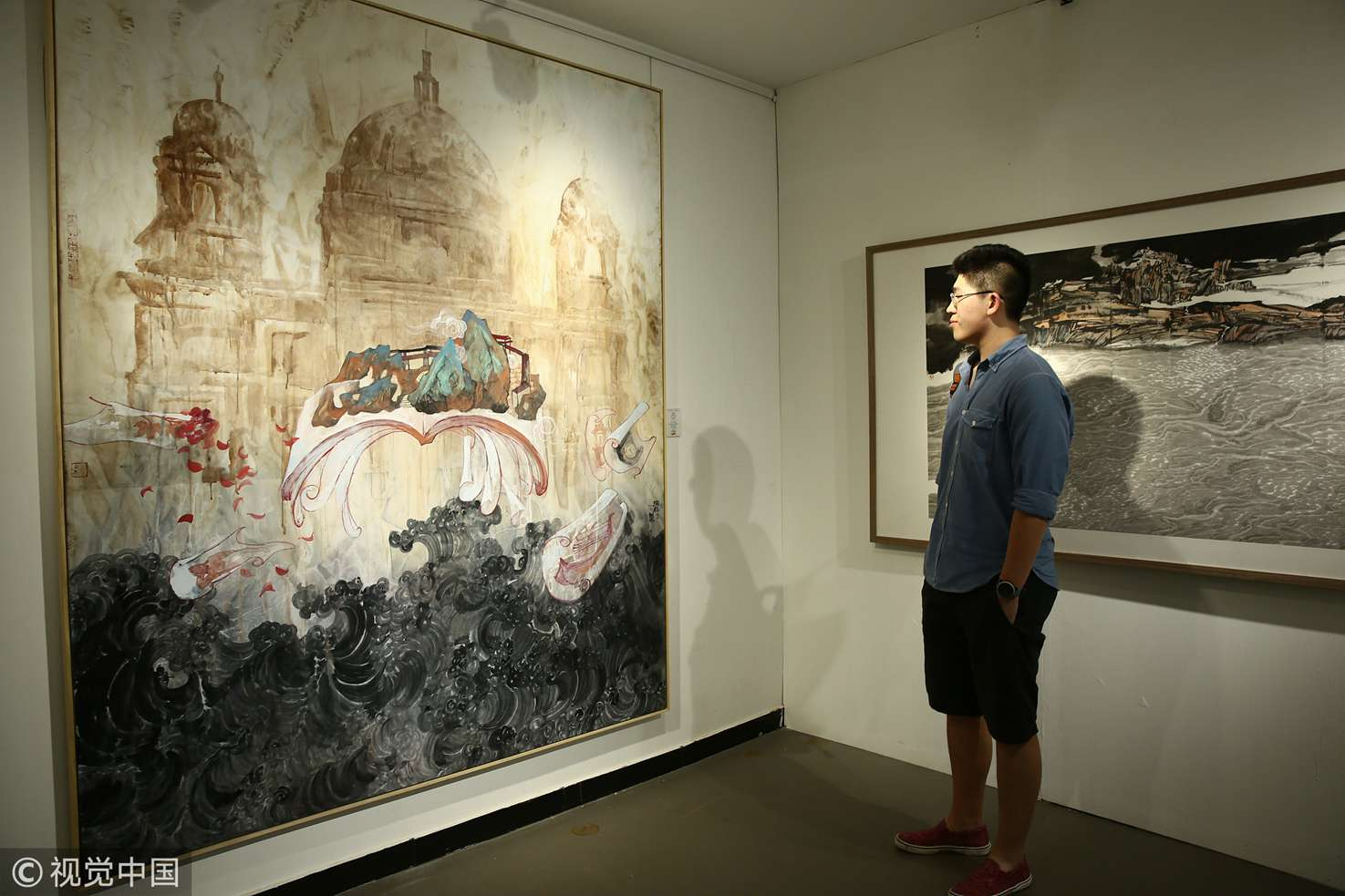
The 2018 Belt and Road Painting and Calligraphy Masterpiece Exhibition in Beijing's 81 Art Gallery, China, April 29. /VCG Photo
The 2018 Belt and Road Painting and Calligraphy Masterpiece Exhibition in Beijing's 81 Art Gallery, China, April 29. /VCG Photo
Tourism development and cultural exchanges between the two sides have also seen robust growth. The total number of inbound and outbound tourists between China and the Belt and Road countries is expected to exceed 85 million by 2020, spending about 110 billion US dollars.
The aggregate scale of international tourism along the Belt and Road accounts for around 70 percent of the global total, said Li Jinzao, China's vice minister of culture and tourism at the Belt and Road tourist city mayors' summit in Zhengzhou, capital of central China's Henan Province in May.
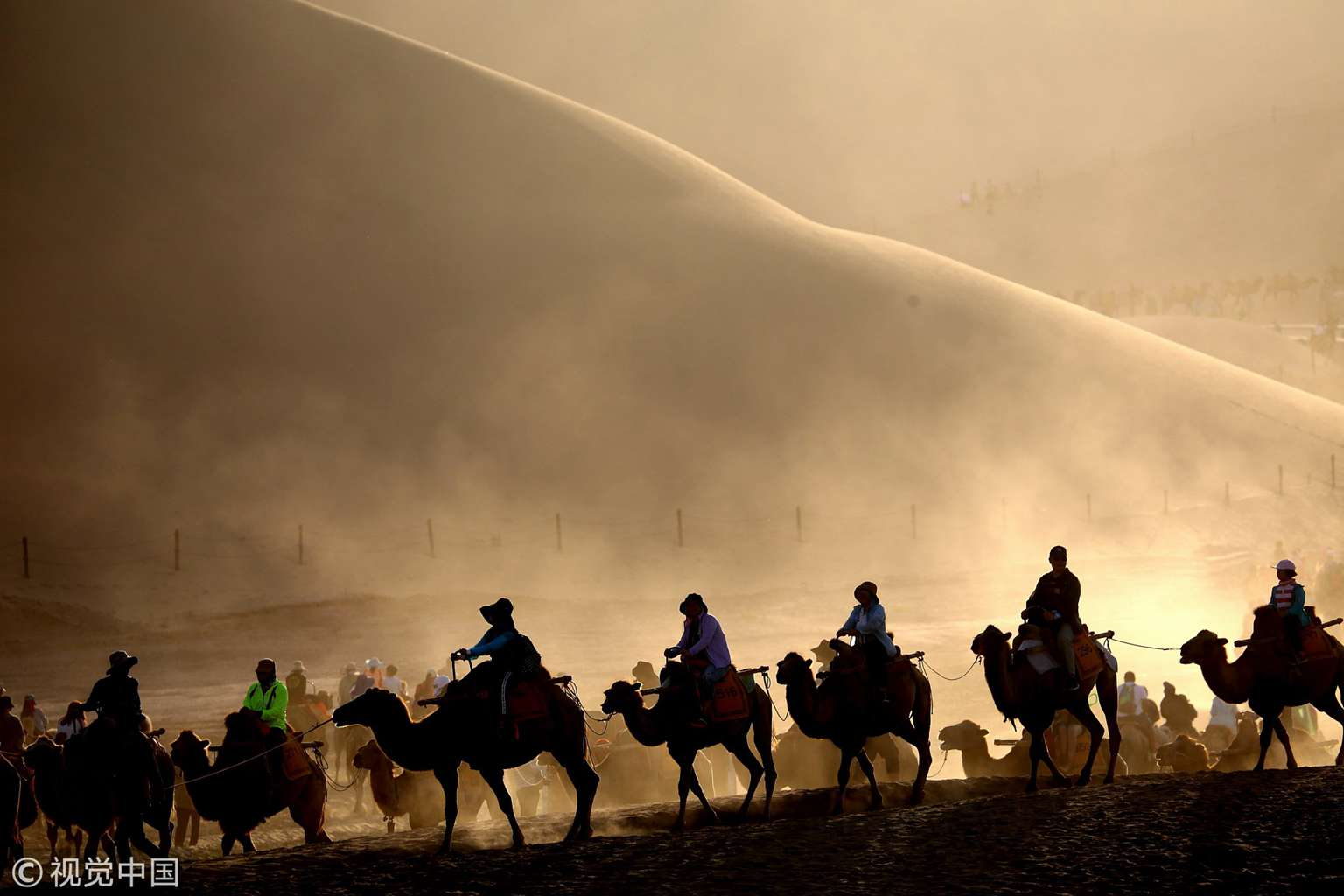
Visitors ride camels in the Echo Sand Mountains in Dunhuang, Gansu, China, August 6, 2018. /VCG Photo
Visitors ride camels in the Echo Sand Mountains in Dunhuang, Gansu, China, August 6, 2018. /VCG Photo
According to a UN World Tourism Organization's report released at the summit, the number of tourists in the areas along the Road grew from 775,000 in 2012 to nearly 3.1 million in 2016, with 2.1 million coming from China. The country has become a major driving force for the tourism in countries and regions along the 21st-Century Maritime Silk Road.
(With inputs from Xinhua)
(Cover photo: People visit the Echo Sand Mountains and Crescent Moon Spring in Dunhuang, Gansu, China, August 6, 2018. /VCG Photo)





